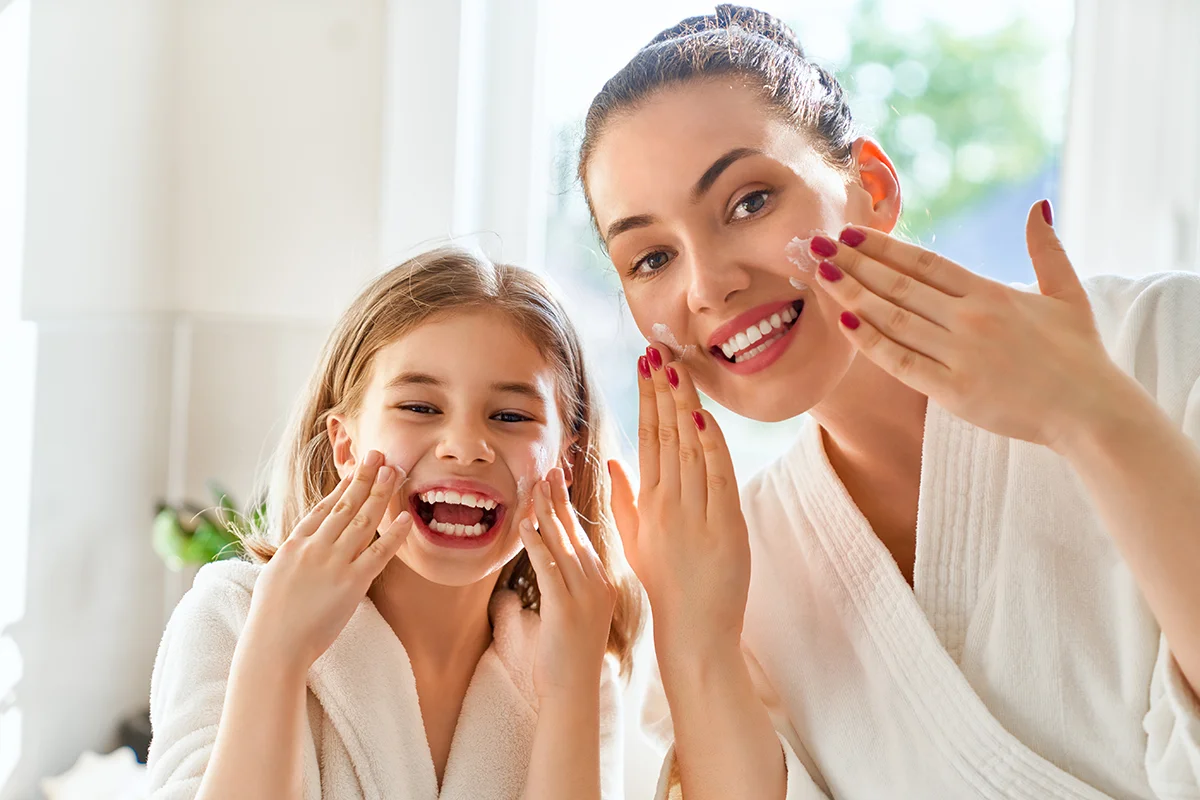Paediatric skincare has been very prominent part of discussions for most parents when they visit a dermatologist clinic. The increasing number of options and the choices that a parent has to make every time during the visit to supermarket to pick up soaps, shampoos or moisturisers for children can be confusing and daunting. Here are 6 practical skin care tips for children that all parents can follow as suggested by Dr. Rasya Dixit, one of the best dermatologist in Bangalore:
1. Keep it simple!
A child’s skincare routine has to be kept simple. This is because as children are growing up they form the basic ideas of skincare from watching their parents. This basic skincare should essentially include a cleanser, a moisturiser and sunscreen. As a leading skin specialist in Bangalore, this is the first advice that Dr. Rasya Dixit shares with parents when it comes to child skin care. These concepts will carry them forward through the childhood and teenage and as they can add on new products as they enter into adulthood. They will keep following the same routines. Products for children should be hypoallergenic, fragrance free, pH balanced, SLS and paraben free. These are a few things which are important to watch out for when you go skincare shopping for your children.
2. Use gentle cleansers.
Children have very delicate skin and their skin barrier is still not completely formed. This means the skin is not able to protect itself if harsh cleansers are used. It is advisable to choose a pH balanced, soap free cleanser which is suitable for baby skin types. The best cleansers would be syndet based bars. When you’re giving the baby a bath, make sure that you do not use very hot or very cold water and keep the temperature lukewarm. Avoid long baths and bubble baths as this will tend to make the skin more dry, prone to eczema and other skin conditions.
3. Layer the moisturiser.
A child's skin is usually more on the dry side and it is yet to learn to make its own skin protective ceramides and moisturiser. Prefer cream or ointment-based moisturisers for your children. Though lotions are more liquid and easier to apply, these may not give adequate hydration to the skin. However, in more humid weather conditions, lotions may be used. Frequent reapplication of moisturiser is also advised especially on areas of friction like elbows, knees, arms and legs as the child start moving. In areas with cold and dry weather, use protective clothing as well after every application of moisturiser to prevent the dehydration of the skin. Look for products containing ceramides which are the building blocks of the moisturisers. Ceramides help to hydrate the skin in a better and more effective way. So, keep that in mind when you choose moisturisers for your child.
4. Use physical sunscreen.
In children less than 2 years of age, it is always better to avoid any kind of sunscreen. At this age, the tight epidermal junctions have not yet been formed and products contained in sunscreen could penetrate these and cause irritation of the child’s skin. For children in this age group, it is best to use physical protection methods like clothes, hats and umbrella and avoid sun exposure during the peak hours of the day. In older children, choose a physical sunscreen. Physical sunscreens tend to be more whitish and more sticky than the chemical sunscreens. They are generally considered to be safer than the chemicals sunscreens for children.
5. Avoid these chemicals in your products.
All the products which are sold and marketed for children may actually not be all that safe for your children. Store bought products for children may contain large amount of fragrance. Fragrance can cause the sensitisation of the skin causing frequent redness, allergies and itching in the children. Always avoid products which have fragrance. Look for the labels of hypoallergenic when you choose to buy products for your child. The normal skin pH is acidic and a pH balance maintenance is important to maintain the barrier of the skin in a child. Choosing products which are pH friendly will be beneficial for children. Parabens and SLS are frequently added products which help to stabilise the moisturiser or shampoo that they are present in but unfortunately can cost sensitisation of children. So, avoid products that contain paraben or SLS additives.
6. Seek treatment early.
Being a paediatric dermatologist in Bangalore and having treated many child skin concerns, Dr. Rasya Dixit says that some children are prone to redness, dryness, flaking, itching and eczema. If you see these rashes they could indicate conditions like atopic dermatitis or seborrheic dermatitis and it is best to be diagnosed by a dermatologist. Treatments can be kept simple if these child skin problems are detected early. So, don’t hesitate to seek the help of a dermatologist as soon as you see the symptoms.
To learn more, please feel free to reach out at +91 9901890588, +91 9901162088 or visit Dr. Dixit Cosmetic Dermatology Clinic in Bangalore.


